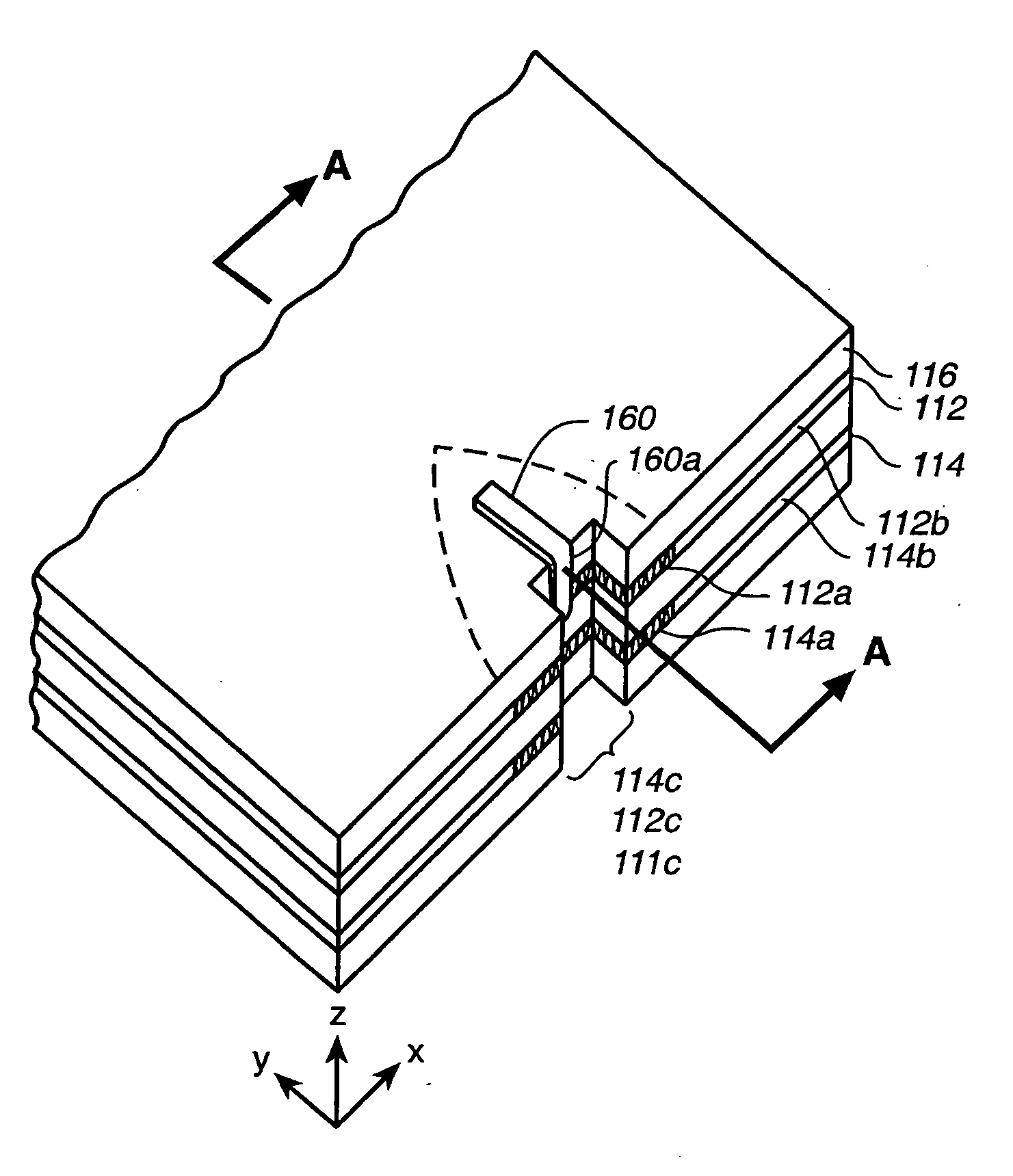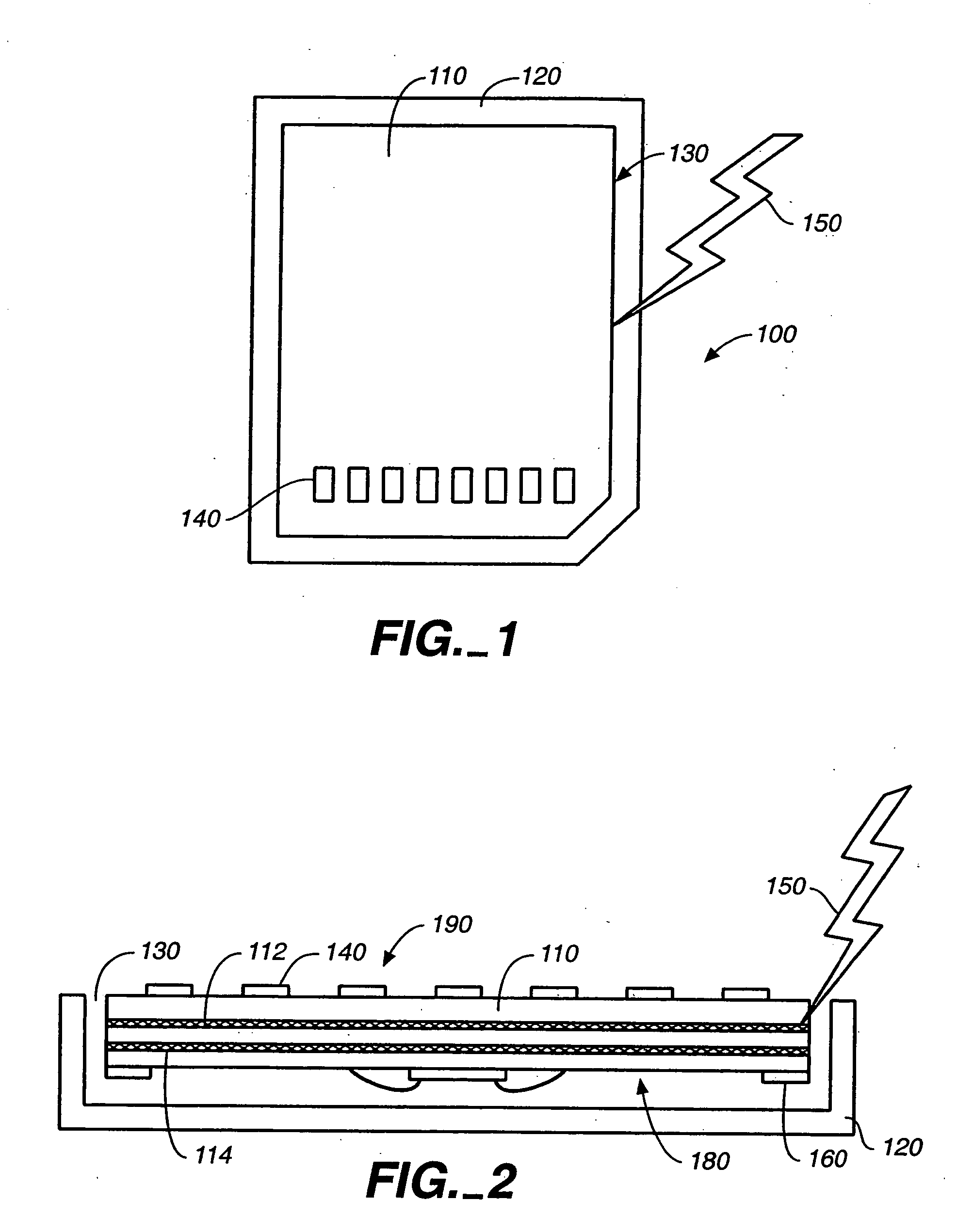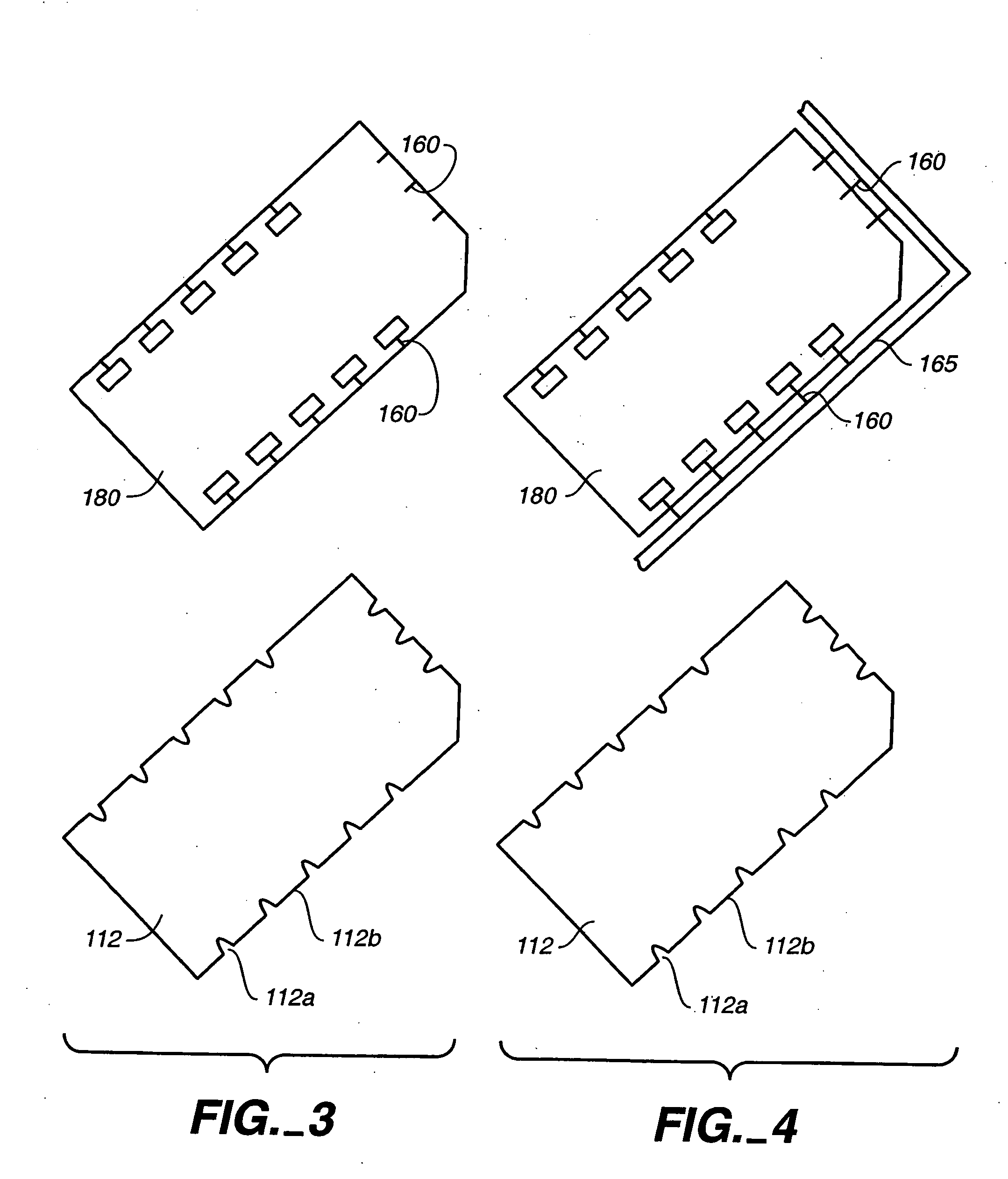Card manufacturing technique and resulting card
a card manufacturing and card manufacturing technology, applied in the field of circuit boards, can solve the problems of high risk of electrostatic discharge, low esd protection for susceptible easy entry and damage of electrostatic discharge to circuit components of memory cards, so as to avoid damage to other circuit components from high voltage discharge, short circuit, and less prone to short circuiting of multiple conductive layers
- Summary
- Abstract
- Description
- Claims
- Application Information
AI Technical Summary
Benefits of technology
Problems solved by technology
Method used
Image
Examples
Embodiment Construction
[0020]FIG. 1 shows the rear side of a memory card exemplifying the present invention. The memory card 100 comprises a circuit board 110 having an exposed rear side with terminals 140 and a covered front side (not shown). The covered side comprises at least one integrated circuit including flash memory, circuit traces, and passive components, which are not shown. Cover 120 covers over the front side and edges of the circuit board, such that the rear side of the circuit board is exposed to form substantially all of the rear side of the memory card. A narrow gap 130 at the junction between the edges of circuit board 110 and cover 120 exists. An electrostatic discharge 150 is shown entering the narrow gap 130 at the junction between the edges of circuit board 110 and cover 120. U.S. Pat. No. 6,040,622 to Wallace, entitled “Semiconductor Package Using Terminals Formed on a Conductive Layer of a Circuit Board” describes in detail the construction of a memory package in detail and is hereb...
PUM
 Login to View More
Login to View More Abstract
Description
Claims
Application Information
 Login to View More
Login to View More - R&D
- Intellectual Property
- Life Sciences
- Materials
- Tech Scout
- Unparalleled Data Quality
- Higher Quality Content
- 60% Fewer Hallucinations
Browse by: Latest US Patents, China's latest patents, Technical Efficacy Thesaurus, Application Domain, Technology Topic, Popular Technical Reports.
© 2025 PatSnap. All rights reserved.Legal|Privacy policy|Modern Slavery Act Transparency Statement|Sitemap|About US| Contact US: help@patsnap.com



